Beethoven Symphony No 9 in D minor, Op. 125 (with piano sheet music arrangements in our Library)

Beethoven’s Symphony No. 9
Symphony No. 9 in D Minor, Op. 125, byname the Choral Symphony, orchestral work in four movements by Ludwig van Beethoven, remarkable in its day not only for its grandness of scale but especially for its final movement, which includes a full chorus and vocal soloists who sing a setting of Friedrich Schiller’s poem “An die Freude” (“Ode to Joy”). The work was Beethoven’s final complete symphony, and it represents an important stylistic bridge between the Classical and Romantic periods of Western music history. Symphony No. 9 premiered on May 7, 1824, in Vienna, to an overwhelmingly enthusiastic audience, and it is widely viewed as Beethoven’s greatest composition.
Beethoven’s Symphony No. 9 was ultimately more than three decades in the making. Schiller’s popular “Ode to Joy” was published in 1785, and it is possible that Beethoven made his first of multiple attempts to set it to music in the early 1790s. He clearly revisited the poem in 1808 and 1811, as his notebooks include numerous remarks regarding possible settings. In 1812 Beethoven determined to place his setting of “Ode to Joy” within a grand symphony.
Ten more years passed before that symphony’s completion, and during that time Beethoven agonized over the composition’s every note. His notebooks indicate that he considered and rejected more than 200 different versions of the “Ode to Joy” theme alone. When he finally finished the work, he offered to the public a radically new creation that was part symphony and part oratorio—a hybrid that proved puzzling to less-adventuresome listeners. Some knowledgeable contemporaries declared that Beethoven had no understanding of how to write for voices; others wondered why there were voices in a symphony at all.
The story of the premiere of Symphony No. 9 is widely told and disputed. Beethoven had steadily lost his hearing during the course of the symphony’s composition, and by the time of its premiere he was profoundly deaf. Although he appeared onstage as the general director of the performance, kapellmeister Michael Umlauf actually led the orchestra with the conductor’s baton, taking tempo cues from Beethoven.
According to one account of the event, the audience applauded thunderously at the conclusion of the performance, but Beethoven, unable to hear the response, continued to face the chorus and orchestra; a singer finally turned him around so that he could see evidence of the affirmation that resounded throughout the hall. Other accounts maintain that the dramatic incident occurred at the end of the second movement scherzo. (At the time, it was common for audiences to applaud between movements.) Whenever the applause occurred, that it passed unnoticed by Beethoven makes clear that he never heard a note of his magnificent composition outside his own imagination.
Symphony No. 9 broke many patterns of the Classical style of Western music to foreshadow the monolithic works of Gustav Mahler, Richard Wagner, and other composers of the later Romantic era. Its orchestra was unusually large, and its length—more than an hour—was extraordinary. The inclusion of a chorus, moreover, in a genre that was understood to be exclusively instrumental, was thoroughly unorthodox.
The formal structure of the movements, while generally adhering to Classical models, also charted new territory. For example, the first movement, although in Classical sonata form, confounds listeners first by rising to a fortissimo climax in the harmonically unstable exposition section and then by delaying a return to the home key. The scherzo, with all its propulsive energy, is placed as the second movement, rather than the customary third, and the third movement is a mostly restful, almost prayerful adagio. The last movement builds from a gentle beginning into a brazen finale, while recalling some themes from earlier movements; once the “Ode to Joy” theme arrives, the musical form essentially becomes that of variations within a broader sonata-form structure.
Despite some sharp initial critique of the work, Symphony No. 9 has withstood the test of time and, indeed, has made its mark. In the world of popular culture, the symphony’s menacing second movement in brisk waltz time provided a backdrop for some of the most tense and twisted moments in Stanley Kubrick’s 1971 film adaptation of Anthony Burgess’s psycho-thriller novel A Clockwork Orange (1962).
The choral fourth movement accompanies a triumphant soccer (football) scene in Peter Weir’s film Dead Poets Society (1989). In the realm of technology, the audio capacity of the compact disc was set at 74 minutes in the early 1980s, purportedly to accommodate a complete recording of Beethoven’s Symphony No. 9.
Symphony No. 9 has also been used to mark monumental public events, among the most moving of which took place on Christmas Day 1989 in Berlin. There, in the first concert since the demolition of the Berlin Wall just a few weeks earlier, American conductor Leonard Bernstein led a group of musicians from both the eastern and western sides of the city in a performance of Beethoven’s Symphony No. 9 with a small but significant alteration: in the “Ode to Joy” the word Freude was replaced with Freiheit (“freedom”).
A performance of the choral finale of the symphony—with simultaneous global participation via satellite—brought the opening ceremony of the 1998 Winter Olympics in Nagano, Japan, to a powerful close.
Browse in the Library:
| Artist or Composer / Score name | Cover | List of Contents |
|---|---|---|
| Bach J.S. Cello Suite No. 6 arr. piano solo by Joachim Raff |
 |
|
| Bach J.S. Cello Suite No.1 arr. for piano solo |
 |
|
| Bach J.S. Das Musikalisches Opfer BWV 1070 |
 |
|
| Bach J.S. Fifield Transcription Cantata BWV 147 Jesu, Joy of Man’s Desiring piano solo |
 |
|
| Bach J.S. Harpsichord Concerto A-major arr. 2 pianos | ||
| Bach J.S. J.S.- Das Wohltemperierte Klavier I (Urtext) |
 |
|
| Bach J.S. Marcello – BWV 974 Concert no. 3 | ||
| Bach J.S. My First Book of Bach favorite pieces in easy piano arrangements by D. Dutkanicz |
 |
Bach J.S. My First Book of Bach favorite pieces in easy piano arrangements by D. Dutkanicz |
| Bach J.S. Parodi Siciliano from BWV 1031 Piano solo transcription |
 |
|
| Bach J.S. Prelude XXIV | ||
| Bach J.S. Ricercar 6 BWV 1079 from “The Musical Offering | ||
| Bach J.S. Sarabande for cello | ||
| Bach J.S. Siciliano from BWV 1031 Piano solo transcription by Eugen D’Albert |
 |
|
| Bach J.S. Ten Choral Preludes KiV B 27 | ||
| BACH J.S. The Art Of Fugue Bach Fugues For Keyboard, 1715 1750 |
 |
|
| BACH J.S. The little music book of Anna Magdalena (20 easy pieces) |
 |
|
| Bach J.S. Toccata & Fugue Dminor for Piano |
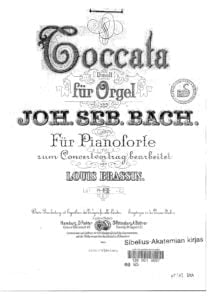 |
|
| Bach J.S. Two Transcriptions Of St. Matthew Passion For Piano Solo |
 |
|
| Bach J.S. Two-Voice Inventions |
 |
|
| Bach J.S.-Busoni BVB36 Prelude Fugue and Allegro BWV998 | ||
| Bach J.S.-Busoni BWV 933-938 | ||
| Bach J.S.-Busoni Prelude in C minor BWV 999 | ||
| Bach J.S.-BWV 1055 4 hands | ||
| Bach J.S.-Choral-BWV-639-Transcr-Busoni | ||
| Bach J.S.-Lipatti – Two Transcriptions of Bach J.S.’s Cantatas 208 | Bach-Lipatti – Two Transcriptions of Bach’s Cantatas 208 | |
| Bach J.S.-Petri – Cantata 208 “Sheep May Safely Graze” Piano solo arr. | Bach-Petri – Cantata 208 Sheep May Safely Graze | |
| Bach J.S.-Siloti- Andante from Sonata for Solo Violin BWV 1003 | ||
| Bach JS “Sheep May Safely Graze” from Cantata 208 (easy piano) |
 |
|
| Bach Liszt Prelude & Fugue In A Minor, Bwv 543 |
 |
|
| BACH Master Musicians Series by Malcom Boyd (eBook) Biography |
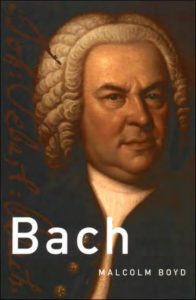 |
|
| Bach Prelude Iv Bwv 849 Wtc I (Musescore File).mscz | ||
| Bach The Goldberg Variations Cambridge Music Handbooks (eBook) |
 |
|
| Bach The Goldberg Variations Cambridge Un. Press (Book) |
 |
|
| Bach The New Bach Reader A Life Of Johann Sebastian Bach In Letters And Documents (Arthur Mendel Hans T. David Christoph Wolff) Book |
 |
|
| Bach Toccata And Fugue In D Minor (Piano Solo) (Musescore File).mscz | ||
| Bach Toccata and Fugue in D Minor BWV 565 (Piano solo arr.) |
 |
|
| Bach Toccata And Fugue In D Minor Bwv 565 (Piano Solo Arr.) (Musescore File).mscz | ||
| Bach Two Part Inventions (No. 1 Bwv 772) (Musescore File).mscz | ||
| Bach-Bauer Die Seele Ruht..Cantata 127 for piano solo | ||
| Bach-Busoni – Chaconne D minor arr. piano solo |
 |
|
| Bach-Busoni Ich Ruf’ Zu Dir Herr Bwv 639 Piano Solo Arr. (Musescore File).mscz | ||
| Bach-Gouin – Harpsichord Concerto in F Minor (Arioso) BWV1056 piano |
 |
|
| Bach-Rummel Ertodt-Uns BWV22 |
 |
|
| Bach-Siloti – Praeludium In B Minor BWV 855a | Bach-Siloti – Praeludium In B Minor Bwv 855a | |
| Bach-Siloti – Praeludium In B Minor Bwv 855a (Musescore File).mscz | ||
| Bach-Siloti Transcription of Bach’s Air from Suite for String Orchestra No.3, BWV 1068 | ||
| Bach-Stradal Trio Sonata No 4 in E minor BWV 528 |
 |
|
| Bach, Johann Sebastian – Complete Lute Music (transcribed for Guitar) |
 |
|
| Bach, J. S. Concert In D Minor Bwv 1043 For Two Violins And Piano Musescore File.mscz | ||
| Bach, J.S. Jesus Bleibet Meine Freude Easy Guitar Arr. Jesu, Joy Of Man’s Desiring Cantata Nr. 147 | Bach, J.S. – – Jesu Bleibet Meine Freude Guitar arr. | |
| Bach, J.S. Jesus Bleibet Meine Freude Guitar Arr. Jesu, Joy Of Man’s Desiring Cantata Nr. 147 | Bach, J.S. Jesus Bleibet Meine Freude Guitar Arr. Jesu, Joy Of Man’s Desiring Cantata Nr. 147 | |
| Bach, J.S. Orchestral Suite No. 1 In C Major Bwv 1066 Passepied (Easy Piano Solo) |
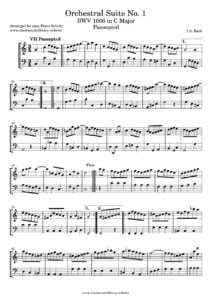 |
|
| Bach, J.S. Arioso For Piano Solo BWV 156 |
 |
|
| Bach, J.S. For Electric Guitar [Guitar SongBook] |
 |
Bach, J.S. For Electric Guitar |
| Bach, J.S. Myra Hess Chorale from Cantata 147 Jesu Joy Of Man’s desiring Hess Myra piano solo Arrangement |
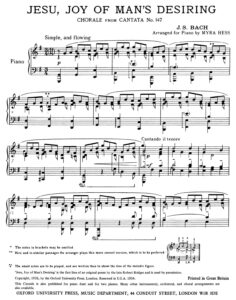 |
|
| Bach, J.S. – Jesus bleibet meine Freude Guitar arr. Jesu, Joy of Man’s Desiring Cantata Nr. 147.mscz | ||
| Bach, J.S. – Jesus_bleibet_meine_Freude_Cantata_Bwv147_10_Choral SATB with Piano by Johann_Sebastian_Bach.mscz | ||
| Bach, J.S. – Toccata and Fugue in D Minor (Piano Solo) |
 |
|
| Bach, J.S. Arioso (Guitar) from Cantata BWV 156 Guitar arr. by Per Orlov Kindgren |
 |
|
| Bach, J.S. Awake, tu us the Voice is calling – Wachet Auf, ruft uns die Stimme Piano solo arr. (Borwick) |
 |
|
| Bach, J.S. Chorale from Cantata 147 Jesu Joy Of Man’s desiring Easy piano solo Arr. |
 |
|
| Bach, J.S. Dinu Lipatti Pastorale in F ( Piano solo transcription) |
 |
|
| Bach, Johann Sebastian (bio book LUX-Lesebogen) (Deutsch-German) Biography |
 |
|
| Bach, JS Partitas Partita 1 |
 |
|
| Bach’s Well-tempered Clavier The 48 Preludes and Fugues (Book ) David Ledbetter |
 |
|
| Bachianas Brasileiras No. 5 (Heitor Villa-Lobos) | ||
| Bachianas Brasileiras No. 5 (Heitor Villa-Lobos) 2 pianos | ||
| Back To The Future Music from the Motion Picture Soundtrack Piano Vocal guitar |
 |
Back To The Future |
| Backstreet Boys – All I Have To Give | ||
| Backstreet Boys – As Long As You Love Me | ||
| Backstreet Boys – Drowning | ||
| Backstreet Boys – How Did I Fall In Love With You | ||
| Backstreet Boys – I Need You Tonight | ||
| Backstreet Boys – I Want It That Way | ||
| Backstreet Boys – Incomplete | ||
| Backstreet Boys – Quit Playing Games With My Heart | ||
| Backstreet Boys – Show Me The Meaning Of Being Lonely | ||
| Backstreet Boys As Long As You Love Me |
 |
|
| Backstreet Boys Backstreets Back |
 |
|
| Backstreet Boys Black Blue |
 |
|
| Backstreet Boys Drowning |
 |
|
| Backstreet Boys Everybody |
 |
|
| Backstreet Boys I Want It That Way |
 |
|
| Backstreet Boys Shape Of My Heart |
 |
|
| Baden Powell Manha De Carnaval Guitar Tablature Tabs |
 |
|
| Baden Powell – So Por Amor (Guitar arr. sheet music with TABs) | Baden Powell – So Por Amor (Guitar arr. sheet music with TABs) | |
| Baden Powell – Samba Do Aviao (Jobim) Guitar arr |
 |
|
| Baden Powell – Samba Em Preludio Guitar TAB |
 |
|
| Baden Powell – Serenata Do Adeus Guitar TABs |
 |
|
| Baden Powell Complete Brazil On Guitar transcriptions with Tablature |
 |
Baden Powell complete sheet music |
| Baden Powell Contemporary solo guitar (Book In Japanese) |
 |
|
| Baden Powell Prelude In A Minor (guitar) |
 |
|
| Baden Powell Retrato Brasileiro Choro Lento (Guitar) |
 |
|
| Baden Powell Songbook – Volume 1 (Guitar) |
 |
Baden Powell 1 |
| Baden Powell Songbook – Volume 2 (Guitar) |
 |
Baden Powell 2 |
| Baden Powell Songbook Volume 3 (Guitar) |
 |
Baden Powell songbook 3 |
| Badfinger – No Matter What |
 |
|
| Baghdarsaryan, Eduard 24 Preludes For Piano |
 |
|
| Baker’s Biographical Dictionary Of Popular Musicians 1990 Complete Vol 1 A L and Vol 2 M Z |
 |
|
| Balada Para Alessandro (Raul Di Blasio) | ||
| Balázs Havasidom Freedom Piano Solo Sheet Music |
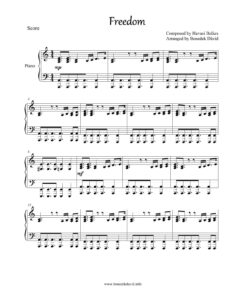 |
|
| Ballad No Name (William Joseph) | ||
| Ballade No. 1 In G Minor (Musescore File).mscz | ||
| Ballads Big Book Of Ballads 2nd Edition Piano Vocal Guitar |
 |
Ballads Big Book Of Ballads 2nd Edition Piano Vocal Guitar |
| Ballads For Classical Guitar |
 |
Ballads For Classical Guitar |
| Ballads Really easy piano (24 great songs) |
 |
Ballads Really easy piano (24 great songs) |
| Ballads The Big Book Of Ballads 3rd Edition Piano Vocal Guitar |
 |
Ballads The Big Book Of Ballads 3rd Edition Piano Vocal Guitar |
| Bambina (Lara Fabian) | ||
| Banana Boat Day-O – Guitarr Arr. With Tabs (Traditional Jamaican Folk Song (Sheet Music) |
 |
|
| Banana Boat Day-O – Guitarr Arr. With Tabs (Traditional Jamaican Folk Song (Sheet Music)) (Musescore File).mscz | ||
| Banana phone (Raffi) | ||
| Bangles – Eternal Flame | ||
| Bar Piano Susi’s – Band 1 – Swing Evergreens and Pop Classics by Susi Weiss |
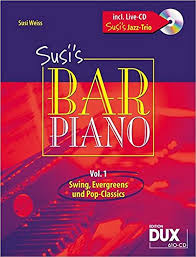 |
Bar Piano Susi’s – Band 1 – Swing Evergreens and Pop Classics by Susi Weiss |
| Bar Piano Susi’s – Band 2 – Swing Evergreens and Pop Classics by Susi Weiss |
 |
Bar Piano Susi’s – Band 2 – Swing Evergreens and Pop Classics by Susi Weiss |
| Bar Piano Susi’s – Band 3 – Swing Evergreens and Pop Classics by Susi Weiss |
 |
Bar Piano Susi’s – Band 3 – Swing Evergreens and Pop Classics by Susi Weiss |
| Bar Piano Susi’s – Band 4 – Swing Evergreens and Pop Classics by Susi Weiss |
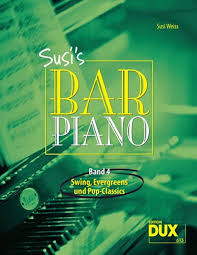 |
Bar Piano Susi’s – Band 4 – Swing Evergreens and Pop Classics by Susi Weiss |
| Bar Piano Susi’s Merry Christmas by Susi Weiss |
 |
Bar Piano Susi’s Merry Christmas by Susi Weiss |
| Bar Piano, Susi’s – Band 5 – Swing, Evergreens and Pop Classics by Susi Weiss |
 |
Bar Piano, Susi’s – Band 5 – Swing, Evergreens and Pop Classics |
| Barbara Livre D’or 18 Chansons Partition Musicale |
 |
Barbara Livre D’or 18 Chansons Partition Musicale |
| Barbara Arens Moonbeams |
 |
